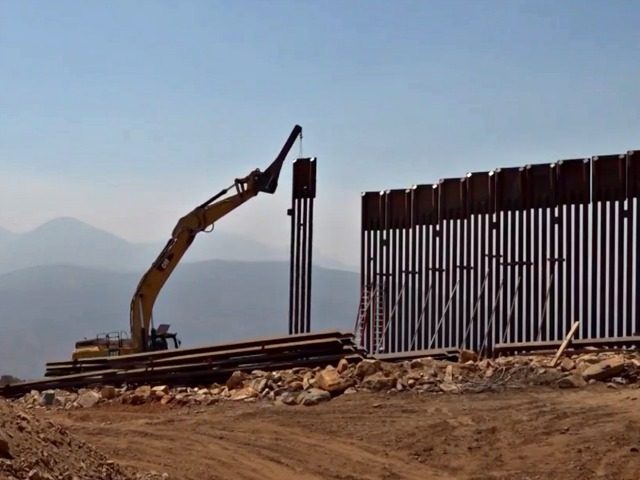President Donald Trump’s border wall is lengthening by 10 miles per week and is helping agents find more smuggled drugs at the legal entry ports, according to a White House statement.
“Construction is moving at a rate of approximately 10 miles per week, setting the administration up to complete its year-end goal with time to spare,” said the September 29 statement, which said that 738 miles had been built, are under construction, or are being planned:
This 450-mile section of constructed wall is significant as it will mark the end of DHS’s first round of efforts to secure the SWB with physical borders. These are some of the highest-trafficking and therefore most critical sectors of the southern border for illegal crossings and apprehensions.
These numbers point to the department’s unrelenting efforts to secure the American people and restore integrity to America’s broken immigration system despite widespread, transparently political obstruction in both Congress and the courts over the course of the administration.
Finally, as hundreds of new miles of border wall system have been constructed, they have pushed cartels to traffic their poisonous products precisely where DHS (Department of Homeland Security) is best equipped — our Ports of Entry. The drugs we are seizing as a result of this new wall that never enter and devastate our communities, and never line the pockets of cartels.
BREAKING: #BorderWall construction has reached Quitobaquito Springs. This week the @NatlParkService closed all public access to the area to suppress Indigenous-led protests & stop the media from documenting the horrific destruction of this sacred site.
Photo by @lucasmullikin. pic.twitter.com/AT68RRZMyF
— Laiken Jordahl (@LaikenJordahl) September 29, 2020
The Washington Post reported on September 29 that Trump’s $15 billion project is being built around-the-clock:
Crews have been working 24 hours a day, seven days a week, on at least five locations on the border, according to officials overseeing the project who spoke on the condition of anonymity because they were not authorized to comment publicly.
The torrid pace of construction has had the biggest impact on Arizona, where the U.S. government has accelerated the project by building through protected areas and federal lands — areas where the administration is able to bypass environmental laws, archaeological reviews, and other safeguards.
Progress has been slower in the Rio Grande Valley of South Texas, the busiest span of the border for illegal crossings and the region that CBP (Customs and Border Protection) has identified as its top priority for barrier construction. Nearly all of the land where the government seeks to build is in private hands.
Mass immigration shifts investment, jobs & wealth from the central states to the coastal states.
NY shows how Trump partly reversed the wealth transfer by curbing migration.
Yet GOP pols keep voting for immigration that makes their states poorer. #H1B https://t.co/NsKy7qY76V— Neil Munro (@NeilMunroDC) September 19, 2020

COMMENTS
Please let us know if you're having issues with commenting.